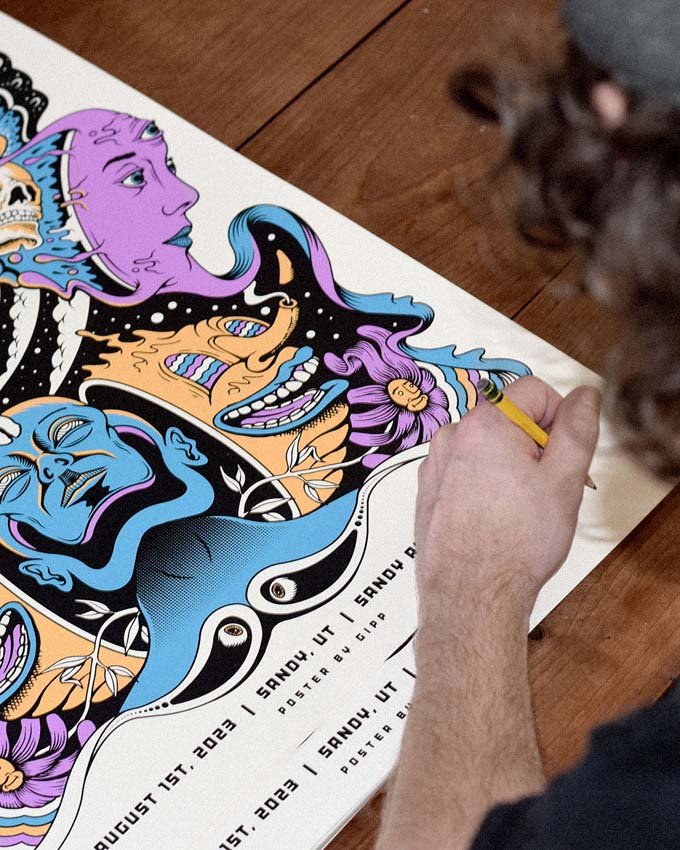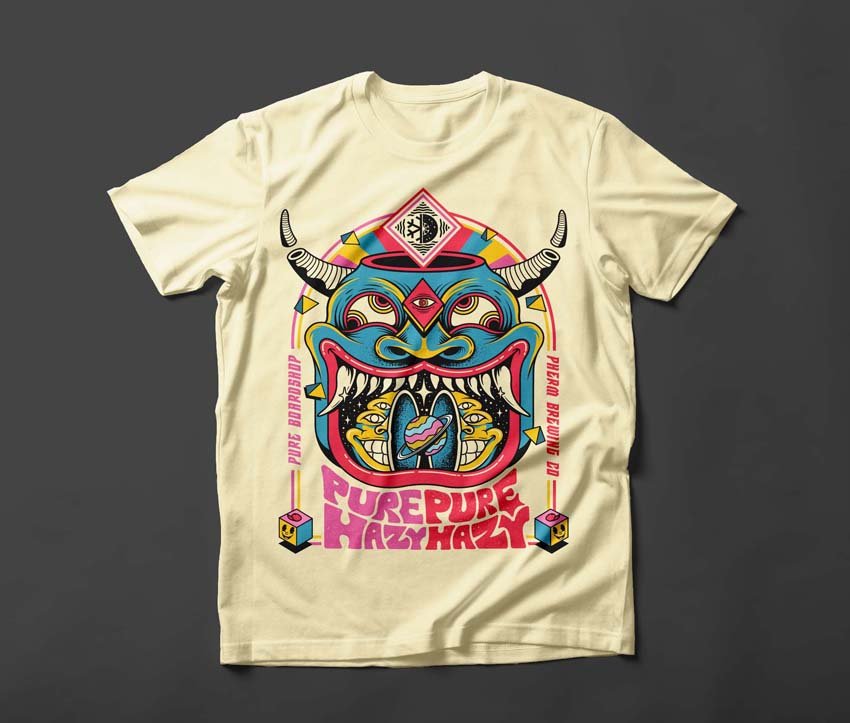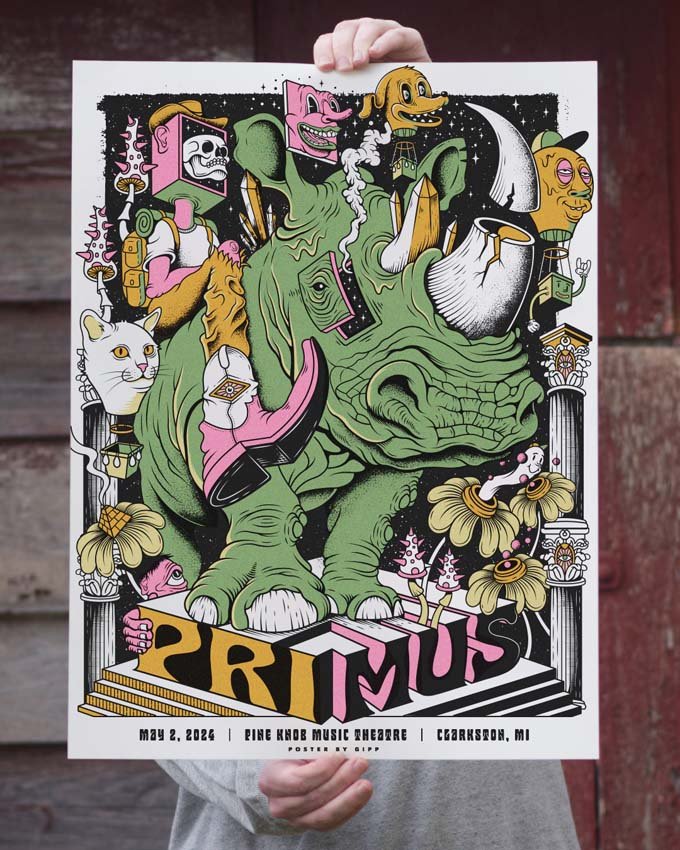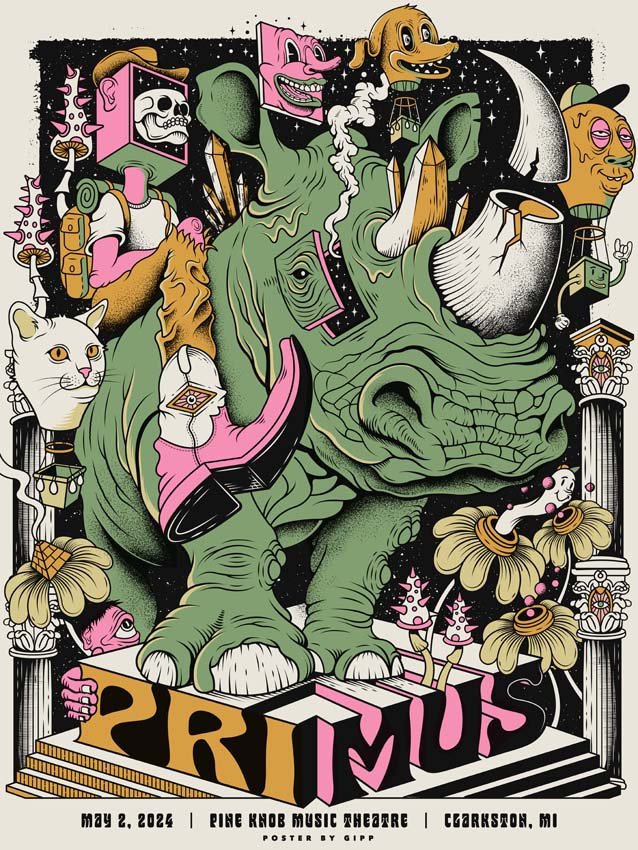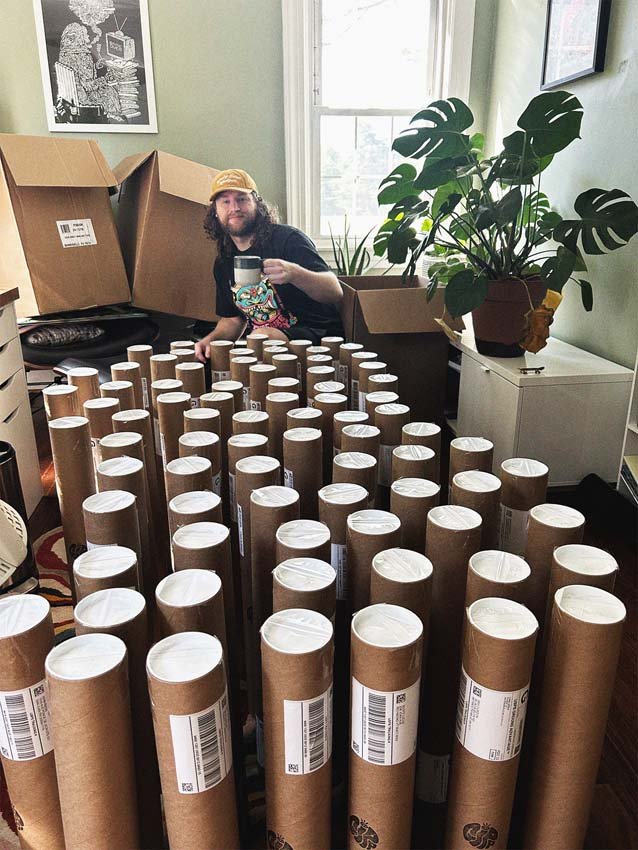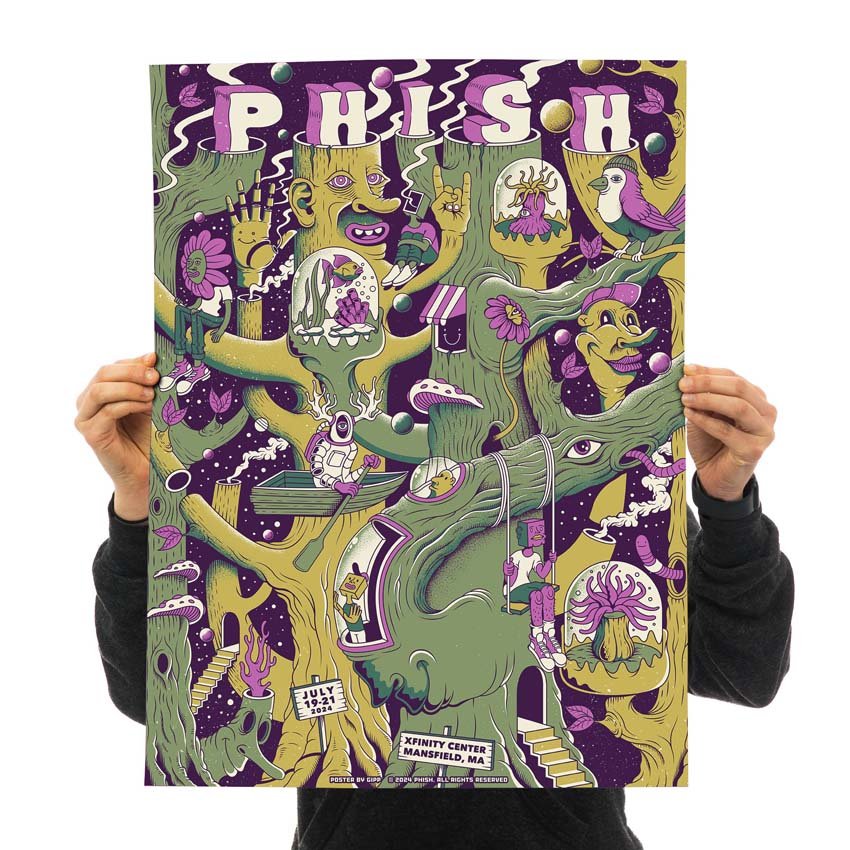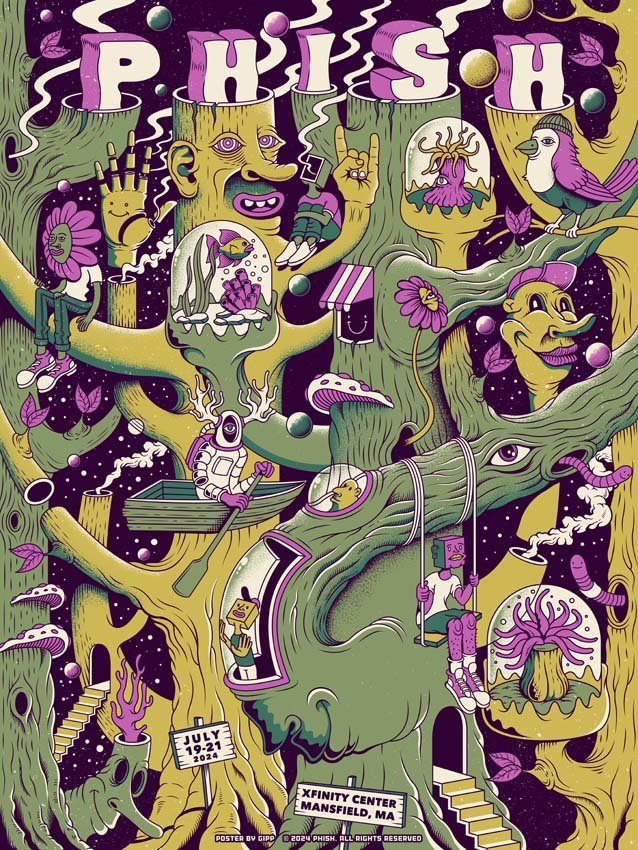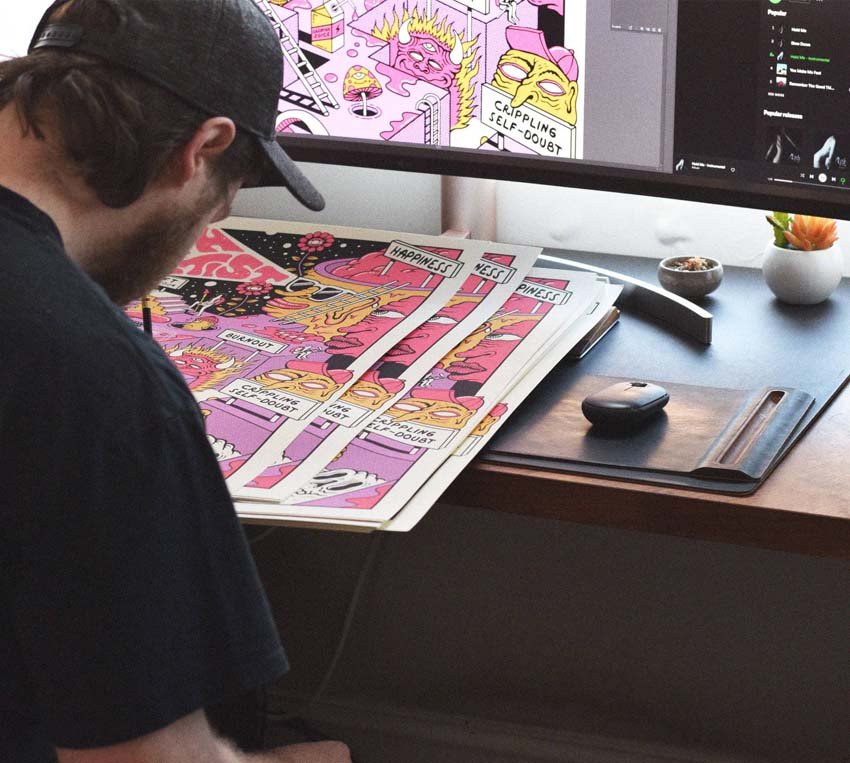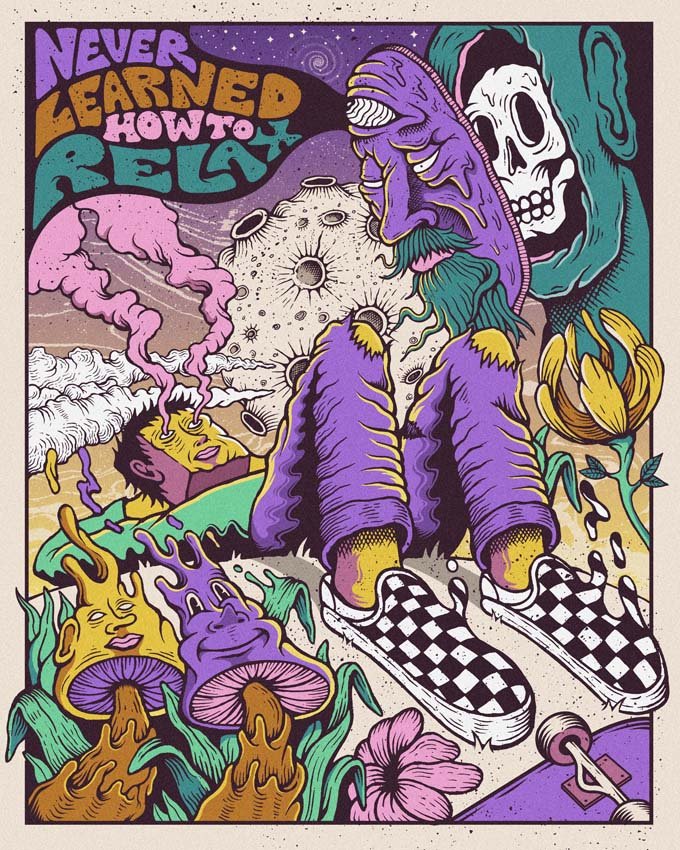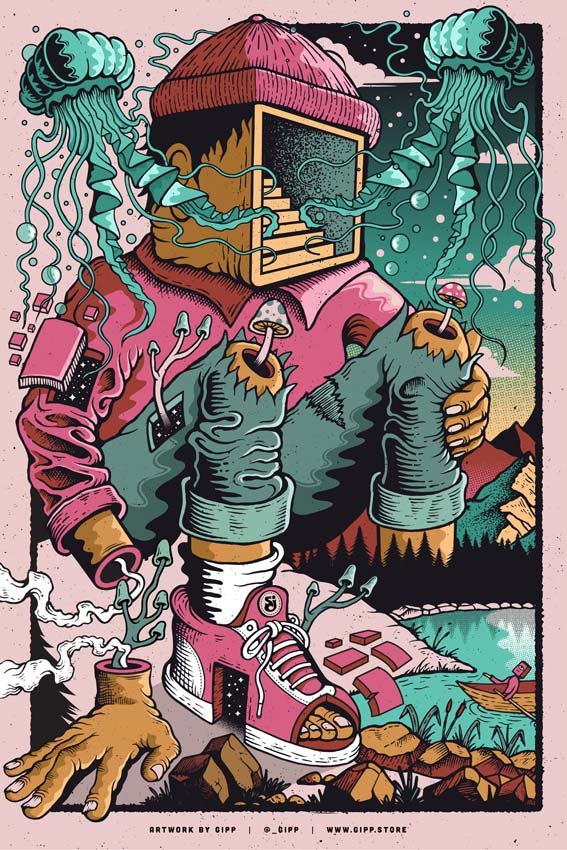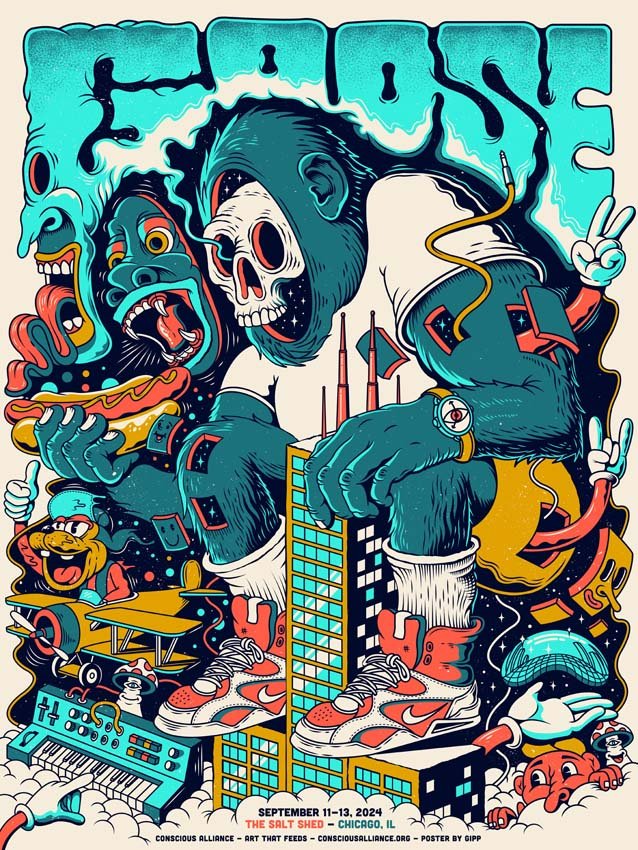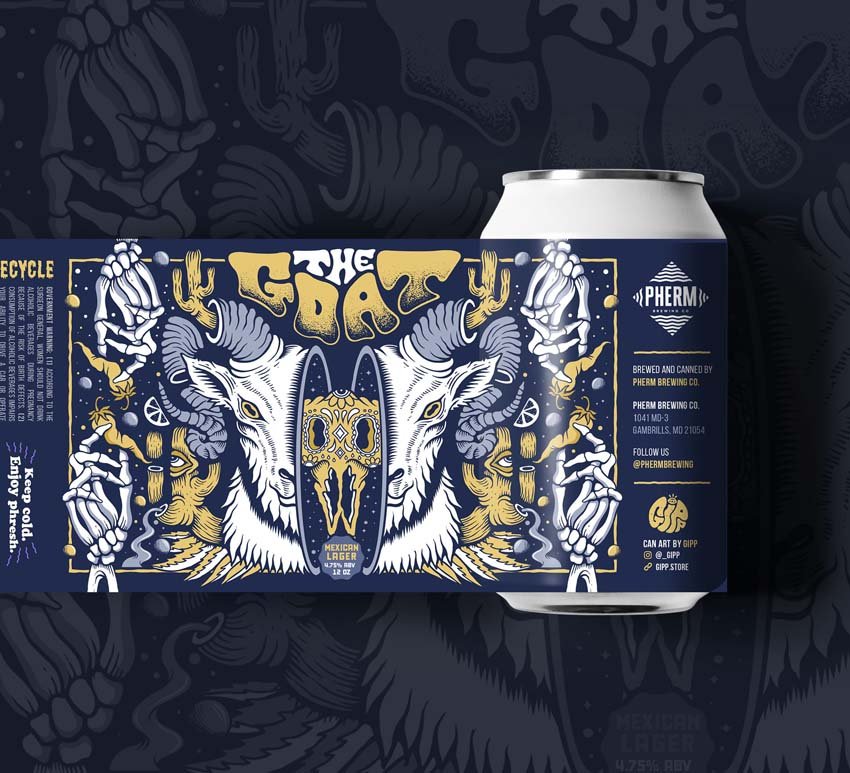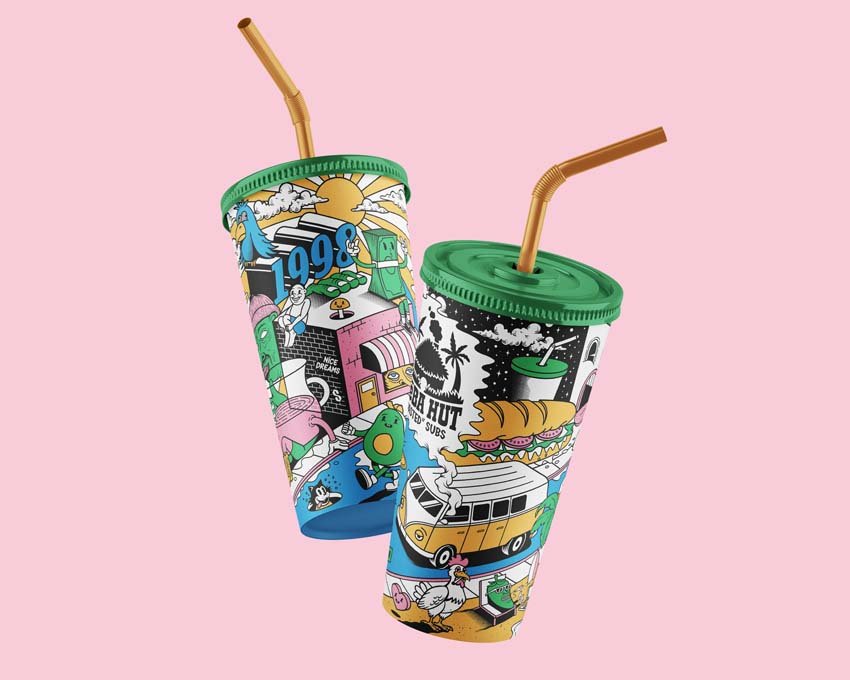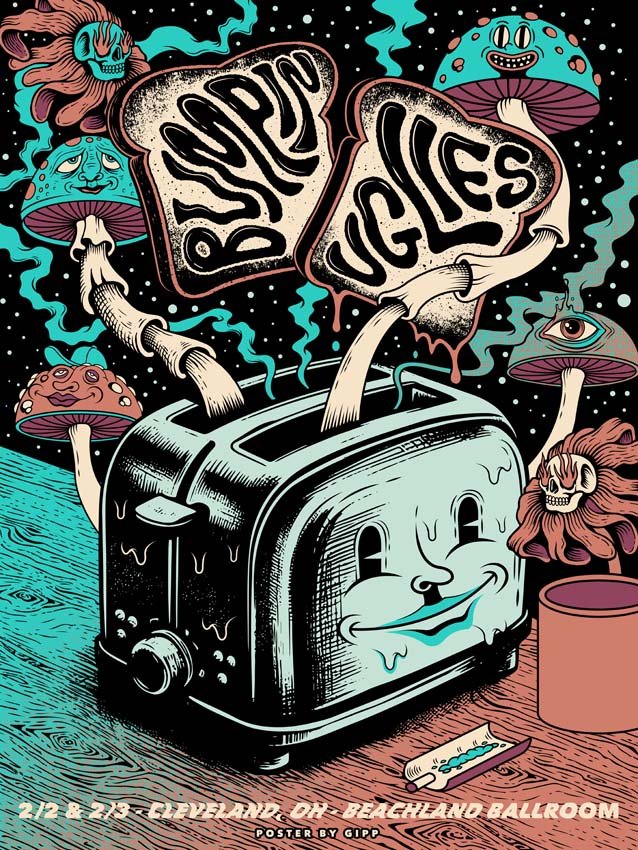+ by Dylan Roche + photos courtesy of Chris Gipple
For anyone lucky enough to have enjoyed the 1990s music scene, there’s an undeniable element of nostalgia to Chris Gipple’s graphics and illustrations and the way they throwback to band posters or album covers of that era. With their vibrant, colorful imagery—characterized by a surrealism that could be described as psychedelic—and big, blocky, bubbly fonts, his illustrations are rooted in a distinct retro aesthetic, but it’s one he’s made his own. “I’ve taken that inspiration and put my own spin on it,” he says.
It’s a style he’s been refining his whole life, drawing from inspiration all around him. “I’ve always had an interest in creating art, even as a kid,” he says. “I was drawn to the skate and surf culture, which has heavily influenced my style.” Some of his earliest memories of art come from when he was between ages 6 and 10; he would draw detailed scenes of skate parks with many characters hanging around. Skateboarding came to be an integral part of his life, often giving him a reason to get out of the house as a teenager and connect with some of the people who came to be his best friends.
It likely explains why professional skater Ed Templeton and his brand Toy Machine are prime influences in Gipple’s style. Other inspirations are artist Jeremy Fish and acclaimed author-illustrator Dr. Seuss. Gipple borrowed from these artists’ aesthetics as a high schooler designing album covers for his band, using Adobe Photoshop software to put them together. While he was developing his trademark style, he was also experimenting with realism. One piece he spent weeks on, a portrait of the Dalai Lama, was the first artwork that he ever felt proud of.
He went on to study computer information systems at Towson University. Although it wasn’t exactly formal arts studies, he acknowledges that the technical skills he gained have played and continue to play a role in his creative process.
Gipple’s primary creative outlet today comes from his two businesses: Nightshift Creative, which does branding and marketing for businesses, and Gipp, his artist identity for illustration and design. There’s an element of balance with the two endeavors. “Nightshift Creative allows me to work with brands like Cheba Hut and Meow Wolf, blending corporate design with my artistic flair,” he explains. Gipp, on the other hand, is a more of a passion project. It carries prints, posters, and T-shirts with his colorful, psychedelic illustrations, some of which promote bands and others that depict his experiences as an artist.
He credits much of his growth as both artist and entrepreneur to his first foray into commerce while in his 20s. Then, he co-founded the apparel brand Infinite Rot Clothing, which heavily focused on skate- and surf-inspired graphic T-shirts as well as hats and hoodies. Fresh out of college at the time, he had the help of Matt Reese of Blk Ankr, the Annapolis-based screen printing shop where Gipple hung out as a young adult, learning a creative skill. He recalls many late nights when he would stay up at the shop, printing T-shirts and other apparel to sell at a vendor market the next day.
“Essentially, what you’re doing is making these big stencils,” he explains. “You coat a screen with an emulsion and then expose that emulsion to a light source. You have your artwork stencil covering that, so it can wash out the emulsion.” One of the surprising challenges of screen printing, he discovered, is that it limits the number of colors used with each printing, so it forced him to get creative. “[T]hat whole process, I think, [is] where I started to hone what my style was and what I wanted my artwork to look like,” he says. Learning the craft of screen printing would later prove useful as Gipple went on to design screen-printed posters for some notable bands such as Phish, Primus, and Ween, among others.
He received his first feedback about his work while selling T-shirts at vendor markets early in his career. One of his favorite markets was Hampdenfest, the neighborhood arts festival in Baltimore, where he participated as a vendor for three years. “People are walking into your booth and seeing your artwork for the first time, and I just love seeing how they react to it,” he says. “A lot of my art has comedic elements to it, so I love when people see something that makes them laugh.” That same enthusiasm for audience reaction kept him going even after he shuttered Infinite Rot Clothing and transitioned to his present work in graphic design and illustration.
Brainstorming always feels wildly different each time he does it. “Sometimes it’s the dread of staring at a blank canvas,” he says. “Other times, it’s the complete excitement, and it just flows out of me with ease. This is the most challenging part of being a professional creative, juggling many projects and timelines. There is no creativity or inspiration switch you can flick on. But your clients still expect high-quality work delivered on time.”
Once he has an idea—which he gets from creating a mood board with references, color palettes, and images all in one place—he sketches with pencil and paper. When he has the pencil sketch drawn out, he’s able to scan it digitally and clean it up on the computer. He primarily works with Adobe Illustrator software, which offers him versatility in the way it lets him manipulate the lines and create vector graphics, but he’ll turn to Adobe Photoshop software for some parts of the process, such as texturing the image.
When he isn’t busy illustrating, he’s satisfying another part of his creative spirit by playing bass in the band Mountainwolf, which plays what he describes as stoner blues similar to Black Sabbath. Gipple says there’s a synergy between music and visual arts. “Both mediums share the goal of creating a recognizable style,” he says. “Many bands rely on visual arts for merchandise and promotional materials, as music revenue has shifted.”
One reason that Gipple enjoys doing illustration for bands is because of the creative freedom it provides. “I’ve been fortunate that most bands in my career came to me because they were drawn to my style,” he says. “This gives me the confidence to create art that is completely authentic and true to myself.” This contrasts with some of his corporate work, for which there is a predefined look and feel that a client has established.
In everything he does, Gipple always wants to convey humor and, above all, a sense of relatability. “I want people to feel happy and see themselves in my art,” he explains. In some cases, that might mean eliciting laughter; in other cases, it might mean confronting a mental health struggle head-on. As a prime example, he calls out his illustration Never Learned How to Relax. It’s a piece inspired by a struggle he has: the constant need to be productive and to not really know how to sit back and enjoy the present moment. “I’ve had a lot of people look at those types of pieces and they’re like, ‘Oh, man, yes, I feel the exact same way,’” he says. “It’s almost comforting to know there are people out there with similar struggles.”
For more information, visit
gipp.store or @_gipp on Instagram.
